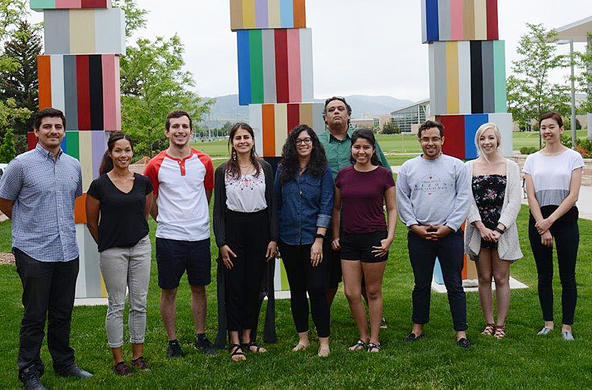Amongst the 80,000 compounds that help promise “better living through chemistry,” are 3,000 or so perfluoroalkyl and polyfluoroalkyl compounds (PFAS) that repel grease and water. These have widespread use in non-stick surfaces (Teflon), raincoats, stain-proof coatings, and fire-fighting foams. Essentially, nothing can stick to them. Even geckos are reported unable to stick to a Teflon-coated surface.
About 50 years ago, studies within the chemical industry linked these chemicals to a variety of health problems, including cancer and impaired kidney function. As some chemicals were recognized as harmful, chemists altered the molecules to produce others, for which no impacts were yet documented. The list of organic-fluoride compounds proliferated, and many with proprietary formulations are distributed widely. Because we are not expected to eat them, they are not listed as an ingredient in many products.
Many of these compounds are slow to degrade in the environment, but they are soluble in water and transported widely. Recent studies have found significant concentrations of them in Svalbard—-the northernmost island of Norway at 80 N latitude. The compounds preferentially accumulate in organisms, especially predatory birds.
Accumulations of PFAS compounds are documented for military air-fields, where they have been tested and used to prevent fire. In other areas, the production of organo-fluoride compounds was associated with inadvertent or overlooked releases to the environment. For 35 years, the Chemours plant in Fayetteville, North Carolina released GenX (a polyfluoralkyl substance) to the Cape Fear River, which serves as the source of drinking water for Wilmington, NC, just downstream. Contents in rainwater were traced to airborne emissions from the same plant. GenX had been created by the company to replace a PFAS chemical it was using for its Teflon products, known as PFOA, yet GenX has many of the same impacts as the compound it replaced. Recently, the Southern Environmental Law Center negotiated a consent order with the state and Chemours to prevent further releases of the pollution to the environment.
Polyfluoroalkyl compounds have no natural origin; when we find them in nature, we know humans are responsible. They are produced by mining fluorspar—a calcium fluoride mineral that is used to produce hydrofluoric acid, which in turn is used to react with hydrocarbons to “fluoridate” them. They are more complicated than the chlorofluorocarbons, which were banned globally for their role in the destruction of ozone in the stratosphere. They also differ from fluorosilicic acid, which has been used to fluoridate drinking water and toothpastes, which have solid documentation for improvements to dental health.
What is instructive about polyfluoroalkyl compounds is how easy it is to add a chemical to our environment for which we have little or no understanding of side-effects. Even those that produce polyfluoralkyl and related compounds recognize the problems, yet they have contributed to the continued use and release of these compounds to the environment. That’s where we must depend on federal regulations that prevent the purposeful or inadvertent contaminations of the environment from affecting the health of all of us.
Given its recent trajectory, let’s hope the U.S. Environmental Protection Agency is up to the task.
References
Lim, X. 2019. The fluorine detectives. Science 566: 26-29
Skaar, J.S., et al. 2019. Elucidation of contamination sources for poly- and perfluoroalkyl substances (PFASs) on Svalbard (Norwegian Arctic). Environmental Science and Pollution Research 26: 7356-7363.
Wang, Z., J.C. DeWitt, C.P. Higgins, and I.T. Cousins. 2017. A never-ending story of Per- and polyfluoroalkyl substances (PFASs)? Environmental Science and Technology 51: 2508-2518.
Lim, X. 2019. The fluorine detectives. Science 566: 26-29
Skaar, J.S., et al. 2019. Elucidation of contamination sources for poly- and perfluoroalkyl substances (PFASs) on Svalbard (Norwegian Arctic). Environmental Science and Pollution Research 26: 7356-7363.
Wang, Z., J.C. DeWitt, C.P. Higgins, and I.T. Cousins. 2017. A never-ending story of Per- and polyfluoroalkyl substances (PFASs)? Environmental Science and Technology 51: 2508-2518.






